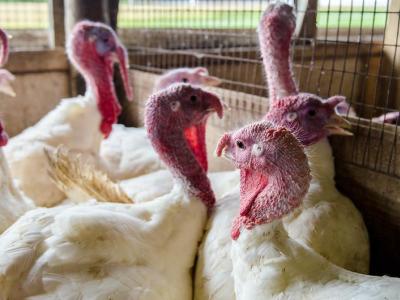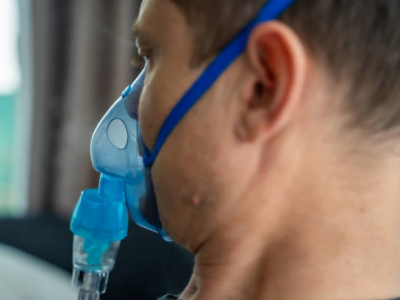Study finds individual prescribing habits key to antibiotic overuse
The top 10% of healthcare workers in terms of antibiotic use prescribe the drugs for 95% or more of patients they see for colds, bronchitis, or other acute respiratory infections (ARI), according to an Annals of Internal Medicine study yesterday.
The lowest 10%, in contrast, prescribe antibiotics at 40% or less of patient visits for ARI.
Utah researchers analyzed data on 480,875 Veteran Affairs visits among 2,594 providers who treated at least 100 patients for ARI from 2005 through 2012. They determined that 59% of the variation in prescribing patterns was attributable to the habits of individual providers, compared with 28% to differences in practice among clinics and 13% to differences in practice among hospitals.
They also found that the proportion of ARI diagnoses that led to antibiotic prescriptions increased from 67.5% in 2005 to 69.2% in 2012, and the rate of macrolide antibiotics prescribed spiked from 36.8% to 47.0%. Antibiotic prescribing was highest for sinusitis (86%) and bronchitis (85%) and varied little according to fever, age, setting, or coexisting condition.
"One of the things that makes this work stand out is that we could discern three levels of variation in antibiotic prescribing—by provider, clinic, and VA medical center—in a large data set," said coauthor Tom Greene, PhD, director of population health at the Utah Center for Clinical and Translational Science, in a University of Utah new release. "This showed us the most striking result in this study, that the variation of prescribing practices between providers was quite large after accounting for patient characteristics."
Jul 20 Ann Intern Med abstract
Jul 20 University of Utah news release
Lyme testing might not work in low-prevalence settings
Standardized two-tiered serologic testing may produce false-positives 80% of the time for Lyme disease in a low-prevalence setting, rendering the test of little value for this situation, according to a study yesterday in Clinical Infectious Diseases.
Researchers from Duke University in North Carolina, Johns Hopkins in Baltimore, and two Boston hospitals first reviewed the medical records of patients who tested positive for Lyme disease by standardized two-tiered serologic testing from 2005 through 2010 in Duke University Health System, which is in an area of low Lyme incidence.
Based on clinical findings, they calculated the positive predictive value (PPV) of Lyme disease serology. They then reviewed the outcome of serologic testing in patients who had clinical syndromes compatible with Lyme (arthritis, cranial neuropathy, or meningitis). They defined a case of Lyme disease as a positive two-tiered serologic test combined with a compatible clinical illness.
Only 76 (1.6%) of 4,723 patients tested positive by established laboratory criteria during the study period. Among 70 seropositive patients whose medical records were available, 12 were determined to actually have Lyme disease (for a PPV of 17%), 6 of whom had documented travel to Lyme-endemic regions. Excluding patients with a history of travel to such an area, including 5 false-positive patients with documented travel histories, would yield 6 true-positives out of 59 cases, for a PPV of 10%.
Given that positive Lyme disease tests were false-positive more than 80% of the time, the authors concluded, "Positive Lyme disease tests may have little diagnostic value in this setting."
Jul 20 Clin Infect Dis abstract
Exposures in NYC labs prompt alert on brucellosis risk for workers
The potential exposure of 53 laboratory workers in two New York City hospitals to the bacterium that causes brucellosis recently prompted New York City health officials to urge clinicians and lab staff to take precautions against the pathogen.
In a Jul 17 alert, the New York City Department of Health and Mental Hygiene (NYCDHMH) said the potential exposures resulted from work done with samples from two patients who were found infected with Brucella melitensis after overseas travel. No lab workers contracted brucellosis.
Brucellosis is a common zoonotic disease found throughout much of the world, but only about 100 to 140 cases are reported yearly in the United States, the notice said, adding that the disease is the most commonly reported lab-acquired infection. The predominant signs and symptoms are fever, profuse sweating, fatigue, headache, weight loss, and joint pain.
The two patients sought treatment in New York in April and May after extended stays in Africa and the Middle East. The brucellosis diagnosis was initially missed. After it was confirmed, the patients were reevaluated and reported having drunk unpasteurized cow, goat, sheep, and camel milk while abroad.
The notice said efforts to identity the agent involved potential aerosol-generating procedures conducted on open lab benches. Up to 35 workers in one lab and up to 18 in the other were classified as having had high- or low-risk exposures to B melitensis.
The alert stressed that clinicians should obtain travel histories from patients with fever and other infectious disease symptoms and should share relevant information with their diagnostic labs. In addition, it said labs should work with clinical samples and suspected clinical isolates in a biosafety cabinet until highly infectious agents have been ruled out.
Jul 17 NYCDHMH alert
PAHO reports 29,000 new chikungunya cases
The Pan American Health Organization (PAHO) late last week reported a big jump in chikungunya illnesses, with 29,256 new cases, bringing the epidemic total in the Americas to 1,594,049 cases.
Last week PAHO reported 28,273 new cases in an update that covered 2 weeks. Weekly increases in the weeks immediately preceding that averaged 11,000 to 12,000 cases. The total so far this year is 457,102 cases, according to the Jul 17 PAHO update.
Honduras, which hadn't reported new cases in 6 weeks, had by far the largest increase—20,618 new cases—for a total of 49,167. Colombia, which has been reporting the highest weekly total for months, had 5,456 new infections, for a total of 295,743. El Salvador was next, with 2,918 new cases, bringing its outbreak total to 23,824.
As has been the case for quite some time, many countries, have not reported data for weeks. The epidemic began in December 2013 with the first locally acquired chikungunya case ever reported in the Americas, on St. Martin in the Caribbean.
Jul 17 PAHO update











